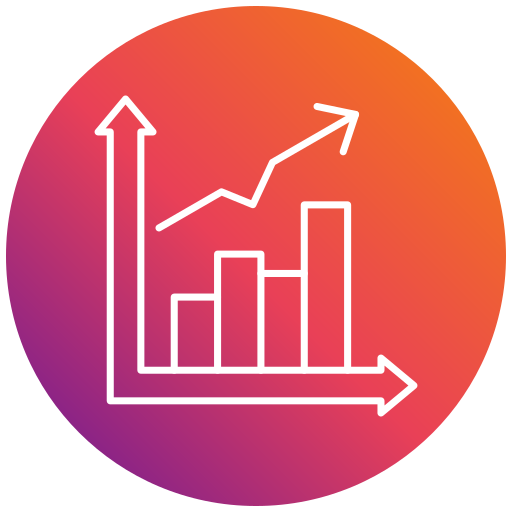
Pricing your SaaS product is one of the most critical decisions you’ll make. Set it too high, and you risk scaring away potential users. Set it too low, and you leave money on the table—or worse, struggle to sustain your business. Finding the sweet spot requires a mix of strategy, psychology, and constant testing. Let’s break down the best pricing strategies and how to maximize revenue without alienating users.
1. Understanding SaaS Pricing Models
Before setting prices, you need to choose the right pricing model. Here are the most common ones:
| Pricing Model | Description | Best For |
| Flat-rate Pricing | One price for all features. Simple but inflexible. | Small SaaS products with limited variations. |
| Tiered Pricing | Multiple plans with increasing features at different price points. | SaaS with a diverse audience and needs. |
| Usage-based Pricing | Charges based on usage (e.g., per API call, storage, or user count). | Infrastructure, API-driven, or cloud services. |
| Freemium Model | Free basic version with paid premium features. | Startups looking to gain mass adoption first. |
| Per-user Pricing | Charges per active user or seat. | B2B SaaS targeting teams and enterprises. |
| Hybrid Pricing | A mix of different pricing models to optimize revenue. | Most SaaS companies, depending on their market. |
Each model has pros and cons, and choosing the right one depends on your target audience, product complexity, and revenue goals.
2. How to Choose the Right Pricing Strategy
Step 1: Know Your Customers’ Willingness to Pay
Conduct surveys, interviews, and competitor analysis to understand:
- How much your target users expect to pay.
- Which features do they value the most?
- What pricing models are they comfortable with?
Tip: Use the Van Westendorp Price Sensitivity Model to identify your ideal price range.
Step 2: Study Competitor Pricing
Analyze competitors’ pricing to position yourself effectively:
- Price lower if you’re entering a saturated market (but not too low to appear cheap).
- Price higher if you offer unique, premium features.
- Offer mid-tier pricing if you want to balance affordability and profitability.
Step 3: Balance Acquisition & Monetization
Your pricing should attract users and generate profit.
| If your goal is: | Focus on: |
| Fast user acquisition | Lower prices, freemium model, free trials. |
| Maximizing revenue | Premium tiers, upselling, and usage-based pricing. |
| Enterprise sales | High-touch sales with annual contracts. |
3. Pricing Strategies That Convert
1. Anchoring Effect: Set a High-Value Benchmark
When users see an expensive plan first, mid-tier plans seem more reasonable.
Example: Netflix displays its highest-tier plan first, making the mid-tier plan feel like a great deal.
2. Psychological Pricing: The $9.99 Trick
- Users perceive $9.99 as cheaper than $10 due to left-digit bias.
- Works well for B2C SaaS but is less effective for enterprise sales.
3. Free Trial vs. Freemium: Which One Works Best?
| Model | Pros | Cons |
| Free Trial | High conversion potential, short commitment period | Users may forget to upgrade or cancel. |
| Freemium | Builds a large user base quickly | Conversion rates to paid plans can be low. |
Tip: If your product requires onboarding, go for a free trial with credit card entry.
4. Offer Annual Plans for Higher Lifetime Value
Encouraging annual billing:
- Reduces churn.
- Increases cash flow upfront.
- Often comes with discounts (e.g., “Save 20% with an annual plan”).
5. Use Value-Based Pricing
Instead of basing pricing on costs, charge based on value delivered to users.
Example: HubSpot charges based on the number of contacts in your CRM, aligning cost with customer growth.
4. Case Studies: How Successful SaaS Companies Set Their Prices
- Slack’s Freemium Model Success Slack started with a freemium model, attracting teams and making internal collaboration seamless. They monetized by offering premium features like unlimited message history and integrations, leading to high conversion rates and stickiness.
- Dropbox’s Referral-Based Growth Dropbox combined freemium with a referral system (get more storage by inviting friends), creating a viral effect and reducing paid acquisition costs.
- Zoom’s Hybrid Pricing Strategy Zoom used a mix of freemium (for individuals) and tiered pricing (for businesses) to dominate the video conferencing space.
5. Common Pricing Mistakes to Avoid
- Underpricing – Makes your product look cheap and undervalued.
- Overcomplicated Tiers – Confuses users; stick to 3-4 clear options.
- Not Testing Pricing Regularly – Pricing should evolve as your product grows.
- Ignoring Customer Feedback – Pricing changes should reflect user needs.
6. How to Continuously Optimize Your Pricing
- A/B Test Pricing Pages – Experiment with different price points and layouts.
- Analyze Churn Rates – If users leave due to pricing, reconsider your strategy.
- Monitor Competitor Changes – Stay updated on market shifts.
- Survey Paying vs. Non-Paying Users – Find out why users hesitate to pay.
- Use Data Analytics – Tools like ProfitWell, ChartMogul, and Stripe can track revenue trends.
Conclusion: Pricing is a Growth Lever, Not Just a Number
The right pricing strategy doesn’t just determine revenue—it shapes customer perception, retention, and growth. Keep testing, listening to your users, and optimizing your pricing model to maximize revenue without scaring away users.
Start simple, analyze results, and adapt. Your perfect pricing strategy is out there—go find it!
What pricing model has worked best for your SaaS? Share your experience in the comments!
Contact us at: https://lnkd.in/gihWy6sk.